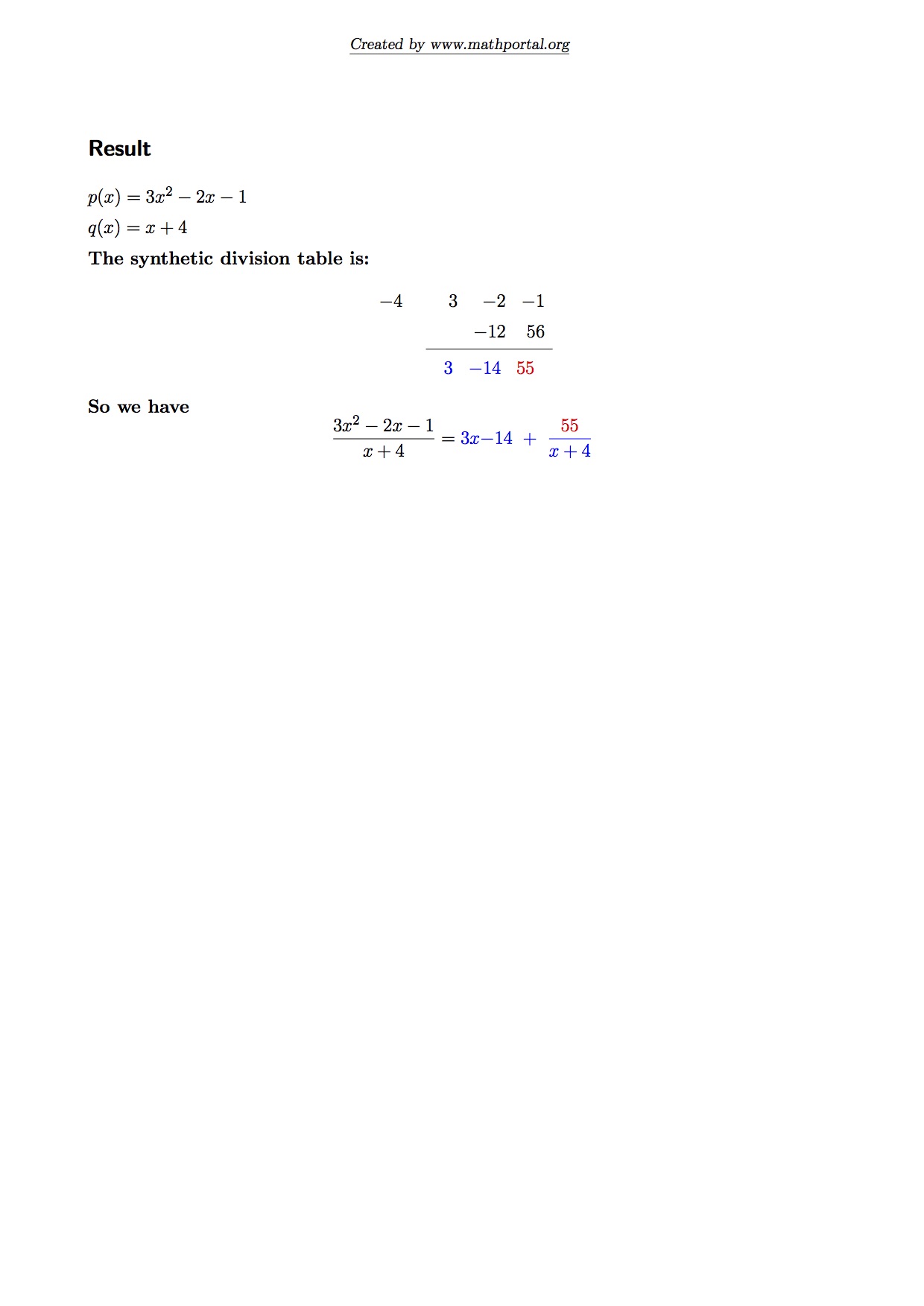How do you find the Vertical, Horizontal, and Oblique Asymptote given #f (x ) = (3x^2 - 2x - 1) / (x + 4 )?#?
1 Answer
Beware!!
Extremely long answer!!
Explanation:
First, you must make sure to understand the situations where the different types of asymptotes appear.
Vertical Asymptotes:
All rational expressions will have a vertical asymptote. Quite simply put, a vertical asymptote occurs when the denominator is equal to 0. An asymptote is simply an undefined point of the function; division by 0 in mathematics is undefined.
Horizontal Asymptotes:
There are two possible scenarios in a rational function for there to be a horizontal asymptote. Both depend on the maximum degrees of the numerator and of the denominator.
1) If the degree of the denominator is higher than that of the numerator, there will be a horizontal asymptote at
2) If the degree of the denominator is equal to the degree of the numerator, there will be a horizontal asymptote at the ratio between the coefficients of the highest degree of the function. Take the example of the rational function
Oblique asymptotes:
Oblique asymptotes occur when the degree of denominator is lower than that of the numerator. In the rational function
Now that we have a solid understanding of the different types of asymptotes and the situations where they are found, we can inspect our rational function,
Let's attack the easiest one to find first: the vertical asymptote. This one can be found by setting the denominator to
Therefore, there is a vertical asymptote at
In this function, there will be no horizontal asymptote, since the denominator is neither of equal or of larger degree than the numerator. However, there will be an oblique asymptote. Let's preform our polynomial division to find its equation.
By synthetic division (this is an image, since formatting polynomial divisions on Socratic is not something I'm good at)

The answer to our division (without considering the rest) is
In summary:
The rational function
graph{y = (3x^2 - 2x - 1)/(x + 4 [-204.2, 204.2, -102, 102.2]}
Practice exercises:
- Given the following rational functions determine all asymptotes, horizontal, vertical and oblique, if they exist.
a)
b)
c)
Good luck, and hopefully this helps!

